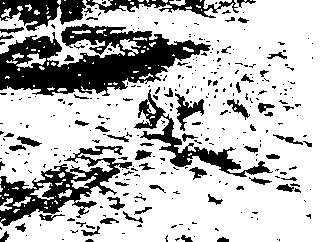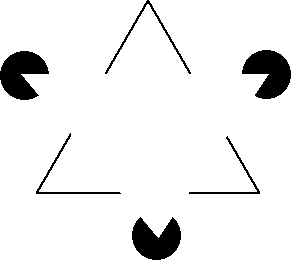| Hypercommunication - Crash Courses - Second-order Systems Theory [ Hyper-Library ] [ Hyper-Lexicon ] [ back ] |
|
|
|
1. |
This argument formally corresponds to that of Gestalt psychology, where figures are perceived without anyone knowing how and why, where meanings are perceived. In order to perceive objects in the sense of S. Ceccato, I have to do some "mental operations". In everyday life these operations refer to meanings, for example to a Dalmatian, in the perception psychology laboratory they can refer to figures - like not completely drawn figures. |


|
2. |
In cognitivistic psychology (AI) there is a model according to which pixels are perceived which then have to be interpreted somehow in the brain. This view is based on bionics, which describes an image-processing computer. As an interpretive observer, I do not perceive states of my retina or brain waves, but objects in my environment, regardless of what my brain had to do to achieve this. If one wanted, one could say that I perceive the result of my - cognitively seen - processing, not its input material. Or in other words: I do not say what I perceive as an observer, but that I distinguish observer perspectives by the fact that I can perceive meaning or artifacts. |
3. |
Since the term "system" is more and more often used as a proper noun in everyday life, I can of course also see so-called "data processing or information systems" as an interpretive observer. But I see a function, not a construction. Terminologically, a computer I work with is not a system. |
back to the interpreting Observer
|
|
|